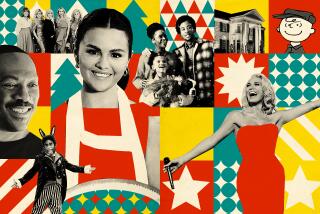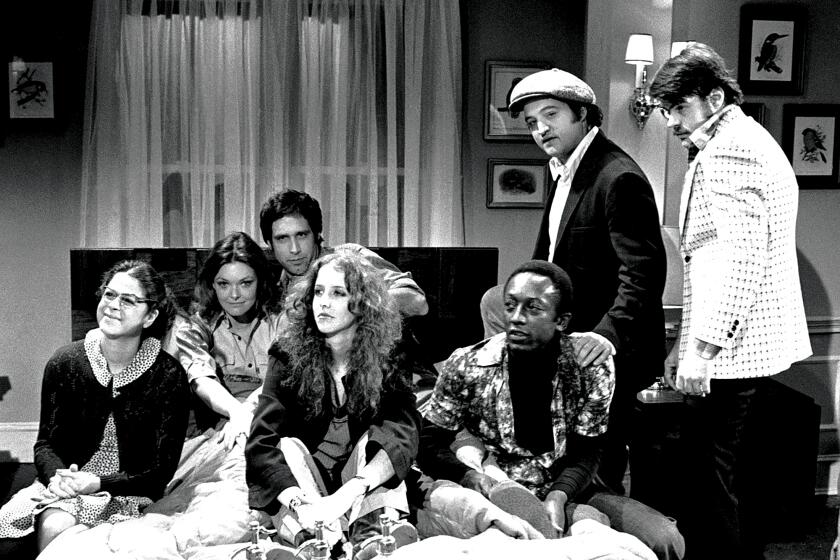Arthur Rankin Jr. made our holidays a little more animated
- Share via
Arthur Rankin Jr., the Rankin of Rankin/Bass Productions, makers of holiday specials and sundry other animated goods, died Jan. 30, age 89, in Bermuda, where he had lived for many years, under the tropical rule of Heat Miser.
That for many of you the end of the preceding sentence will need no explanation is a testament to the mark Rankin made on the culture. (Even, by extension, those who think I am talking about Elliott Smith’s first band.) The rest of you, read on.
The son and grandson of actors, Rankin had worked as an art director at ABC before joining with former ad man Jules Bass in the early 1960s to form Videocraft International, later Rankin/Bass, to make animated TV shows, both cartoons and puppet animation.
BEST TV OF 2013: Lloyd | McNamara
In 1964, NBC aired their stop-motion future Christmas classic, “Rudolph the Red-Nosed Reindeer,” still a staple of holiday television and arguably their masterpiece, if such a heavy word might be applied to such a humble thing.
Directed by Larry Roemer and written by Romeo Muller, “Rudolph” adds back story and a cast of new characters to the Christmas song — an elf who wants to be a dentist, a luckless prospector, an Abominable Snow Monster (called for some reason “a Bumble”), and the inhabitants of an Island of Misfit Toys, North Pole factory seconds, never delivered, living in exile.
It set the tone for all such future Rankin/Bass productions (many of which the partners would co-direct). The narrator — a singing narrator, usually — would propose to tell you the story of the origin of a well-known character (Rudolph, Frosty, the Easter Bunny), or tell about some forgotten incident in their lives (“The Year Without a Santa Claus”), or introduce some unheard of player who helped bring a holiday into being (“Nestor, the Long-Eared Christmas Donkey”). Frequently there is a journey, often through drifts of starchy snow.
“Rudolph” also established the familiar Rankin/Bass look — doll-like, handmade, even homemade. (It is their North Pole that Will Ferrell’s “Elf” inhabits.) There is a magic in puppet animation, which is a thing of real wood and fabric and fabricated three-dimensional things that brings toys to life in a way that the most sophisticated digital productions can never hope to capture.
PHOTOS: Faces to watch 2014 | TV
“Rudolph,” for all its new material, is also a simple tale; that is one of the secrets, I think, of its longevity. The stories grew more baroque over the years, the mythologies crazy and complicated. To Phyllis McGinley’s book “The Year Without a Santa Claus,” in which Santa, sick and tired, decides to give the holiday a miss, Rankin/Bass adds a team of comical elves, the battling brothers Heat Miser (see above) and Cold Miser, and a plot about bringing snow to a hot Southern town.
Though for some the power of nostalgia will overwhelm any objective assessment of their qualities, many Rankin/Bass works — the cartoons, especially — seem, to an adult eye, fatally dated. They have a kind of thrift-store mustiness to them, a visual inelegance that the starriest cast can’t overcome. And yet, there are those who may embrace them for just these qualities.
That, in a way, is the essence of their work, which celebrates the misunderstood outsider, the oddball, the anomaly, the elf who would rather fix teeth than make toys, the creature whose nose is too red or ears are too big (both the errant New Year’s Baby in “Rudolph’s Shiny New Year” and the hero of “Nestor, the Long-Eared Christmas Donkey,” whose superior hearing will guide Joseph and Mary to Bethlehem). Their imperfections are the very sign of their specialness. There is no way to mistake a Rankin/Bass production for the work of a machine, or a market survey. They are too improbable. Humans made this, is what they say.
Twitter: @LATimesTVLloyd
More to Read
The complete guide to home viewing
Get Screen Gab for everything about the TV shows and streaming movies everyone’s talking about.
You may occasionally receive promotional content from the Los Angeles Times.







